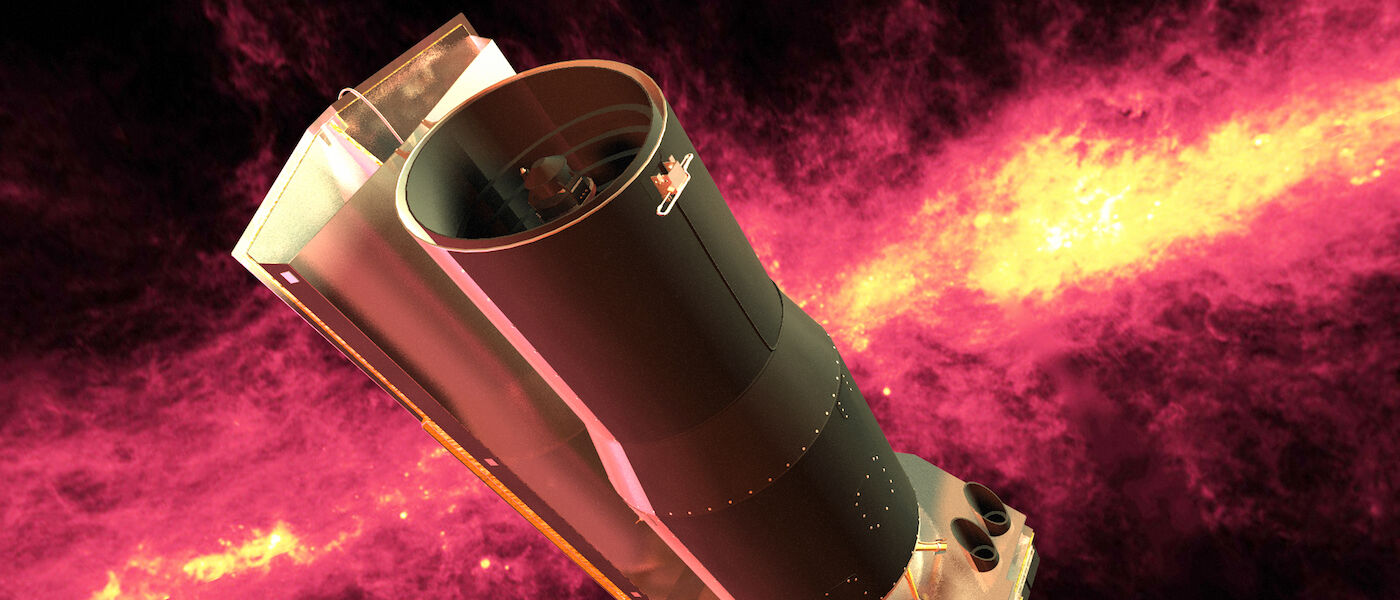Happy 15th birthday to the Spitzer Space Telescope!

Did you know that the Hubble Telescope is not an only child? Hubble has three other siblings! Together, the four telescopes form NASA’s four Great Observatories, each studying the vast universe using a different kind of light.
This August marked the 15th birthday for the youngest of the four, the Spitzer Space Telescope. Originally planned to last 2.5 years, the Spitzer is still going strong.
Here are a few of our favorite of Spitzer's accomplishments over the last 15 years:
Solar System Soup Recipe
Spitzer observed a comet that had material blasted from its surface, finding that it contained the ingredients for our own solar system! That material eventually made up our planets, comets, and more. Spitzer helped to find ingredients including carbonates (like in seashells), clay, silicates (sand), and aromatic hydrocarbons (what you smell coming from a car exhaust). This helped scientists learn more about how our solar system formed!
Planets Far, Far Away
Even though Spitzer was not designed for it, the telescope is very good at studying exoplanets (planets that orbit stars other than our Sun). The Spitzer Space Telescope observes infrared light, which is a type of light our eyes cannot see. This is the same type of light that is seen with night-vision goggles!
Using this light, Spitzer was the first telescope to directly observe light from an exoplanet (a planet outside our Solar System). Spitzer also helped detect one of the farthest planets ever discovered, about 13,000 light years away from Earth. Not only did Spitzer help observe and discover exoplanets, but it used its instruments to determine what the atmospheres of some of those planets are made of and even created the first weather map of an exoplanet. All of this helps scientists on the search for finding life on rocky planets like Earth.
Infrared Milky Way Map
For 10 years, scientists used over 2 million pictures from Spitzer to create one of the most comprehensive maps of our galaxy, the Milky Way. Spitzer was so important for this map because there is so much dust in the Milky Way, but infrared light can usually be detected through all of that dust.
TRAPPIST-1
Seven Earth-sized planets! Spitzer spent over 500 hours observing a star called TRAPPIST-1, where the largest group of Earth-size planets ever found were discovered together. Three of those planets orbit at a distance called the “habitable zone” around their star. The habitable zone is where the temperature is just right for liquid water to form on the surface of a planet.
Zero to 13.4 Billion Light Years
That’s how far the Spitzer Space Telescope can see! The telescope has helped to study some of the oldest and most distant galaxies in our universe. The light from some of the galaxies has taken 13.4 billion years to reach Earth, meaning they were formed less than 400 million years after the beginning of the universe.
Extragalactic Black Holes
With the far distances Spitzer is able to observe, supermassive black holes have been detected. Spitzer has detected black holes formed less than 1 billion years after the universe was born, showing scientists more about the history of galaxy formation.
Ring Around Saturn
You probably already know about the rings of Saturn, but you may not have heard about the most distant one. The largest known ring of Saturn starts around 4 million miles away from the planet, is about 170 times wider and 20 times thicker than Saturn, and is very wispy. Phoebe, one of Saturn’s moons, is found within this ring, and scientists think is most likely the source of the ring material. Spitzer found this ring because it was able to detect the -316 degree glow of the cold dust.
Thanks to NASA for providing some of this great info!
Interested in more space news stories like this? Join us in our all-live planetarium show, "Wonders of the Night Sky," playing every day in the Jennifer Chalsty Planetarium, the biggest planetarium in the Western Hemisphere. Our LSC Space News Now portion is always set aside for the latest topics in space news.
